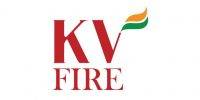 You’re dispatched to a chemical exposure at an industrial site. When you arrive on scene no one is outside awaiting you, but then someone runs out a side door, waving frantically.
You’re dispatched to a chemical exposure at an industrial site. When you arrive on scene no one is outside awaiting you, but then someone runs out a side door, waving frantically.
As you round the corner near the side door, you see an employee inside, under a running emergency shower. His face and hands are red and he’s shivering in the cold water. Liquid is all over the floor.
You ask employees standing near the shower what happened, and they interrupt each other with different stories. You regain control of the conversation and try to get a basic, but important, piece of information: “What chemical was he working with?”
One of the employees gets angry. “He needs help! Do something!”
Rapid assessment for evaluating scene safety is critical and must be performed upon arrival.
A Different Scenario
Now consider arriving at another site for a similar call. At the gate, an employee in an orange safety vest waves you to a stop and directs you to a side door. Another employee guides you inside, and walks you to the emergency location. He points to a large puddle on the floor, surrounded by traffic cones. The employee warns you to stay away from the spill location and that their hazmat team will take care of it after the patient is transported.
Once at the emergency shower, the facility safety coordinator greets you, provides a brief summary of the emergency, identifies the chemical involved and hands you a safety data sheet regarding the chemical.
He points to a time written on a nearby whiteboard, saying that’s the estimated time the emergency decontamination in the shower started. He asks what assistance he and his employees can provide.
Hazmat Responder Competencies
 Industries use thousands of hazardous materials (hazmat) in their operations. These chemicals range from minor irritants to strong corrosives, violent reactive materials and lethal poisons. In the event of a major release or exposure in the workplace, EMS providers will be dispatched to a hazmat emergency at these sites.
Industries use thousands of hazardous materials (hazmat) in their operations. These chemicals range from minor irritants to strong corrosives, violent reactive materials and lethal poisons. In the event of a major release or exposure in the workplace, EMS providers will be dispatched to a hazmat emergency at these sites.
Two National Fire Protection Association (NFPA) standards cover the competencies of hazmat responders: NFPA 472 applies to responders to hazmat releases,1 and NFPA 473 applies to EMS providers and their role in hazmat emergencies, including victim decontamination and prehospital treatment.2 NFPA 473 also addresses both BLS and ALS responder competencies within the wider framework of the incident command system for hazmat emergencies.3
Walk-throughs and discussions with industry representatives can provide information to help plan a future hazmat response.
A key competency practiced at the earliest stages of the response involves assessment of scene safety and recognition of hazards. EMS providers must not allow themselves, other responders or receiving personnel at the hospital to become exposed to these materials, potentially increasing the number of hazmat victims.4,5 For this reason, appropriate scene assessment by the first to arrive is critical.
NFPA 472 describes a risk-based response process based on available information, and the need for effective evaluation of risk as part of a safe response.
Evaluation is a dynamic activity throughout the response, from arrival to initial entry and control of scene, ongoing reassessment of new information or changing conditions, and finally response termination. Industry representatives can be a key source of information for EMS providers.6
Representatives at the industrial workplace may know how their chemicals are supposed to work in the process, but have little-to-no understanding about responding to emergencies. Their emergency response maturity can range from employees with little more than 9-1-1 memorized, to internal hazmat teams with extensive training, practice and equipment.7
Hazmat Response Maturity
Maturity implies a state of full growth or development. This is a simple concept when applied to individuals: An adult is more emotionally mature than an adolescent, and an adolescent is more mature than a child. Organizations can also be mature.
The Software Engineering Institute at Carnegie Mellon University pioneered the concept of maturity models for evaluation and management of complex defense system projects. Organizations with high levels of maturity demonstrate awareness of what is required of them, measure and control their performance, and act to limit exposure to risk. Organizations with lower levels of maturity have little or no awareness of their requirements, and don’t monitor their performance. They’re reactive to threats, out-of-control conditions and emergencies.8
Maturity models have spread far from their roots in software engineering and complex systems development. Professionals in a number of industries have written elaborate templates and models for evaluating, managing, and improving the maturity of their processes and organizations, from project management to safety management. Although there are no specific maturity models for industrial emergency response, its maturity can be evaluated. In this industry, maturity can range from high-performing hazmat teams and fire brigades in the chemical processing industries to unskilled employees in small shops entirely dependent on calling 9-1-1. Rather than attempting to use the models of other professions, which require time-consuming |audits, EMS providers have to rapidly judge maturity in real time, often with limited information. However, both mature and immature organizations will present first impressions and provide a significant amount of information to the aware EMS provider
Driving Improvement
Rapid assessment for evaluating scene safety is critical and must be performed upon arrival. EMS providers can also proactively drive improvement at industrial locations in their response areas with the following:
Identification and outreach. Locations with hazardous materials may be well-known in small communities. In larger communities, EMS providers may have to reach out to local and regional emergency planning committees and industry associations, or look at survey reports that locations with chemical inventories above regulated thresholds must submit to state or federal environmental agencies.
Evaluation and recommendation. Comprehensive audits can be time-consuming, but even walk-throughs and discussions with industry representatives can provide much information. Is emergency decontamination equipment present and functioning? What information do employees have available? How frequently do they train, and how realistic and hands-on is their training? Tell representatives what you expect from them when you arrive at a hazmat emergency.
Enforcement and referral. Some organizations may not listen to recommendations. Local authorities may have to formally communicate code requirements. State or federal safety and environmental agencies also enforce regulations about hazardous materials use, storage and emergency preparedness, and may need to be notified of potential deficiencies.


















































